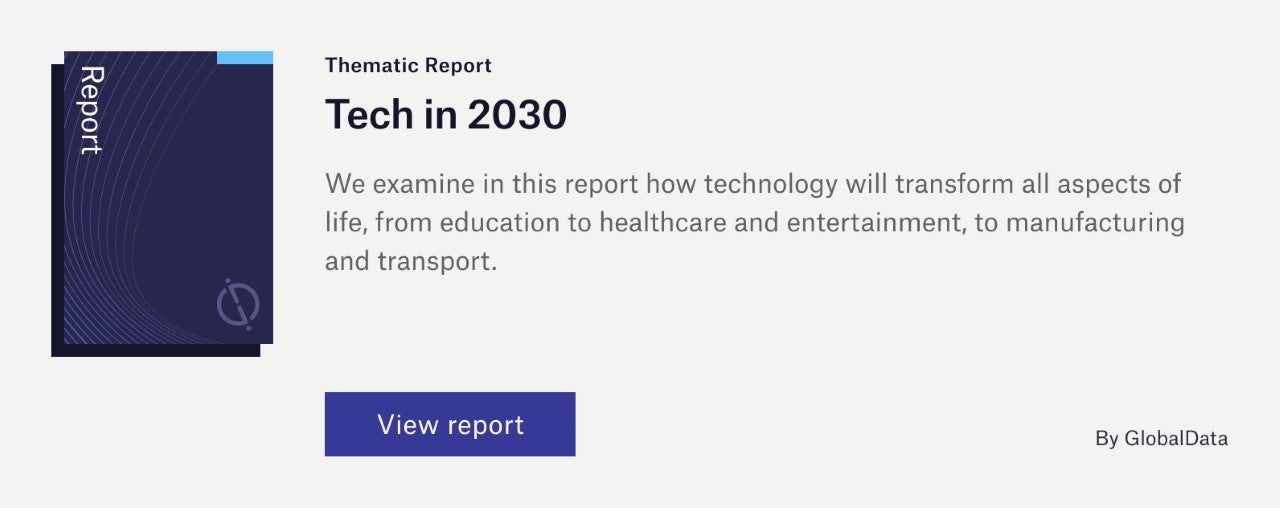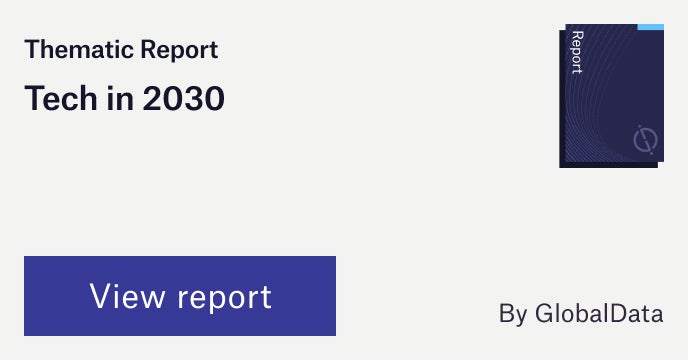The future of the travel and tourism industry will be shaped by a range of disruptive themes, with robotics being one of the themes that will have a significant impact on airport companies. A detailed analysis of the theme, insights into the leading companies, and their thematic and valuation scorecards are included in GlobalData’s thematic research report,Robotics in Travel and Tourism – Thematic Intelligence. Buy the report here.
Robotics, or robotic process automation (RPA), is the application of technology that allows employees in a company to configure computer software, or a ‘robot’, to capture and interpret existing applications for processing a transaction, manipulating data, triggering responses, and communicating with other digital systems.
The deployment of robotics lessens the chance of contracting Covid-19 for travellers, for example, by limiting the frequency of human interaction between staff and guests. As a result, robots are now becoming less of a gimmick and more of a necessity for hotel companies looking to inspire traveller confidence. For businesses, investment in robotics to replace human jobs will help to boost bottom lines in the long term. Although the initial cost of investing in robotics will be high, many companies will make back what they have invested in just a few years, then after that, companies will continue to shrink fixed costs and increase profit margins.
However, not all companies are equal when it comes to their capabilities and investments in the key themes that matter most to their industry. Understanding how companies are positioned and ranked in the most important themes can be a key leading indicator of their future earnings potential and relative competitive position.
According to GlobalData’s thematic research report, Robotics in Travel and Tourism, leading adopters include: Dubai Airports Company, Group ADP, Shenzhen Airport Company Ltd, Port Authority of New York and New Jersey, Vinci, Flughafen Zurich, GMR Group and Guangzhou Baiyun International Airport.
Insights from top ranked companies
Dubai Airports Company
Dubai Airports Company has deployed several different robots to improve tourist experiences and enhance safety. Stationed at arrivals, security robots utilise facial recognition, X-ray scanning, and thermal vision to identify people of interest that could be deemed a security threat. The robots gather data from these features and compile it into a threat assessment, then pass it onto the control room if necessary. The company is also using robotics to ease traveller concerns during the pandemic. Informational service robot ‘Rahal’ welcomes travellers and explains the most up-to-date health and safety measures that are currently in place.
Shenzhen Airport Company
Shenzhen Airport Company was an early adopter of utilising robotics for security purposes. In 2016, Shenzhen Airport deployed a robot that could react to security emergencies around the clock. With four digital cameras, the security robot is capable of autonomous patrols, intelligent monitoring, and auto-recharging. Additionally, it can answer passengers’ questions regarding flight information and will communicate with travellers in different languages. In the same year, sixteen customer-service robots were deployed in the airport by Shenzhen Airlines, with the primary purpose of enhancing customer service.
Groupe ADP
Groupe ADP’s (formerly Aéroports De Paris) Innovation Hub is working on implementing robotic assistance for different tasks, whether industrial or commercial. The group’s innovation team set up a conference about the collaboration between humans and robots and launched a project for considering opportunities to use robots in airport facilities. The group also uses Stanley Robotics for its valet robot. The robot collects the traveller’s car at the airport car park and parks it for them. The robot also knows when each customers’ return flight is due and will have their car waiting for them in the designated pickup area.
To further understand the key themes and technologies disrupting the travel and tourism industry, access GlobalData’s latest thematic research report on Robotics in Travel and Tourism.
- Royal Schiphol Group
- Los Angeles World Airports
- Flughafen Zurich
- Vinci
- GMR Group
- Beijing Capital International Airport
- Manchester Airports Holdings
- Guangzhou Baiyun International Airport
- AENA
Data Insights
From

The gold standard of business intelligence.
Blending expert knowledge with cutting-edge technology, GlobalData’s unrivalled proprietary data will enable you to decode what’s happening in your market. You can make better informed decisions and gain a future-proof advantage over your competitors.
Frequently asked questions
-
1. How are Travel & Tourism companies using robotics?
Travel & Tourism companies are using robotics in various ways, such as customer service robots in hotel restaurants and room service, contactless delivery services, and automated cleaning services using UV light. Robotics can contribute to operational efficiency and cost saving, safety, customer service, and guest experience.
-
2. How does robotics impact the Travel & Tourism industry?
Investment in robotics covers four major use cases: operational efficiency and cost saving, safety, customer service, and guest experience.
-
3. Who are the leading robotics adopters in Travel & Tourism?
Some of the top robotics adopters in Travel & Tourism include MSC Cruises, China Eastern Airlines, easyJet, and Hartsfield-Jackson Atlanta International Airport.
-
4. How does investment in robotics help Travel & Tourism companies?
Robotics in travel and tourism can contribute to operational efficiency and cost saving, safety, customer service, and guest experience.
-
5. What are the challenges with adoption of robotics in Travel & Tourism?
Some of the challenges with adoption of robotics in Travel & Tourism include cybersecurity, customer service, data privacy, and ESG concerns.
-
6. Who are the leading robotics vendors in Travel & Tourism?
Some of the leadingrobotics vendors in Travel & Tourism include Cognex, Cyberdyne, and Estun Automation.
-
7. What are the components of the robotics value chain?
The robotics value chain includes robot manufacturing, hardware components, software components, and robotics as a service.





